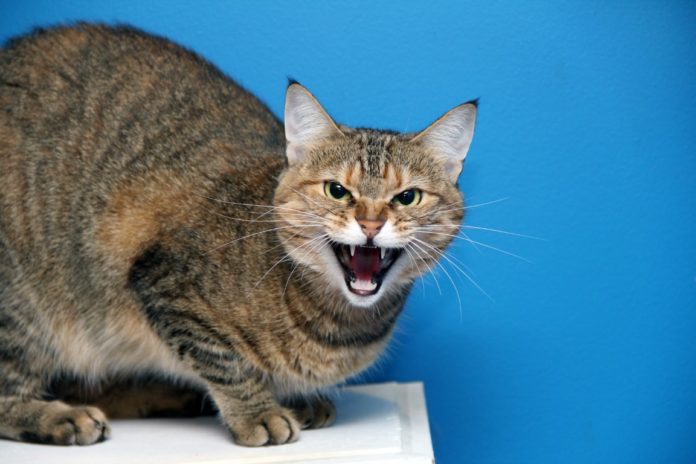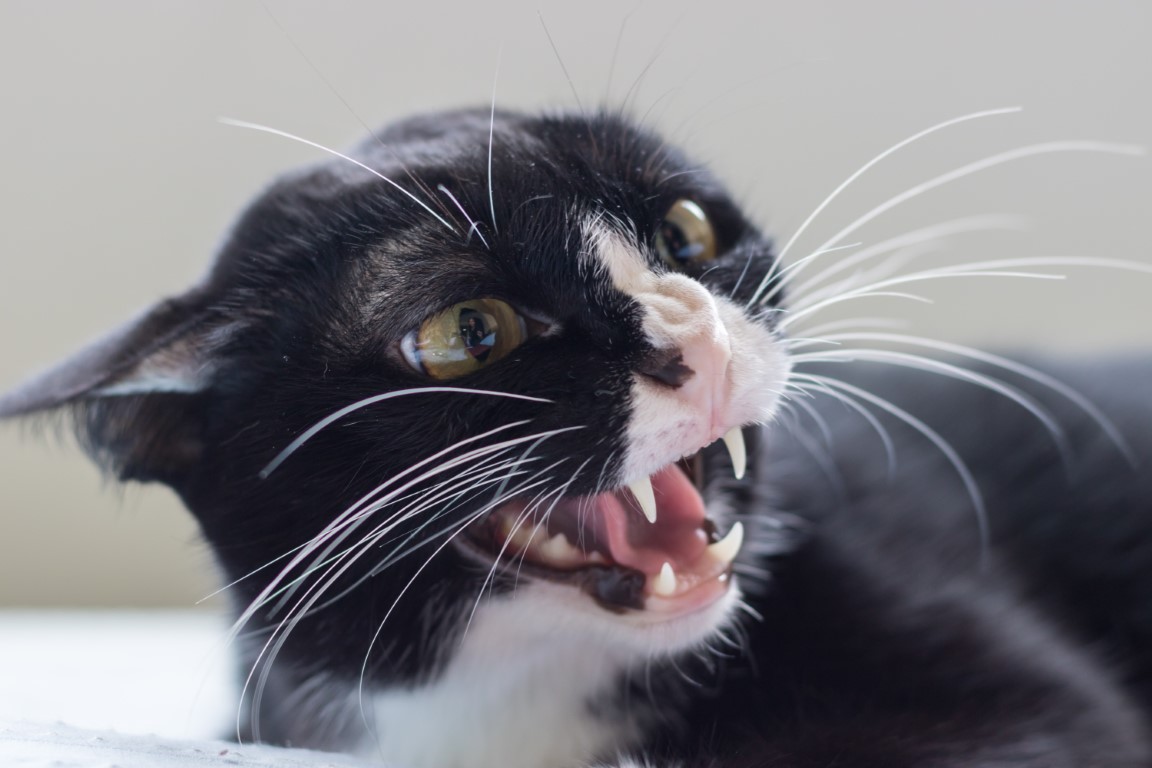
Dog and cat enjoy together
Tiger syndrome in cats: symptoms, causes and treatment
Table of Contents

Tiger syndrome is a behavioral disorder that makes cats aggressive, sometimes even within seconds. It is a pathology that tends to frighten us as it transforms our pets into wild beasts. However, the behavioral disorder is completely reversible. Most of the time, it is related to diet. A change of habit can easily overcome it.
How do you recognize tiger syndrome?
In reality, the instincts of wild animals, usually asleep, are suddenly awakened. There are two types of aggression:
- Predatory aggression: this is the most common and the one that manifests itself first. Your feline starts to hiss as you pass, bite you to the point of sang and scratch your legs, hands and face. He may even go so far as to hide behind a piece of furniture and chase you when you approach him. With tiger syndrome, the cat becomes unrecognizable and dangerous, both for you and for him. He is no longer able to control himself.
- Aggression by irritation. It is a reaction that appears later, once the syndrome has been established for some time. In this case, the feline becomes agitated and excited while its owner fills the bowl. Its irritation is such that it has the reflex to attack its owner when the latter puts down the feed.
Finally, aggressiveness can also be coupled with bulimia. The cat rushes to his meal and eats everything at once, like a glutton. With this kind of attitude, vomiting is more frequent.

What causes the behavioral disorder?
In the majority of cases, tiger syndrome is triggered by food frustration. To understand, we must remember that the cat is a hunter. In the wild, it spends most of its time chasing small prey that it eats partially or totally as it catches it. So, he eats in small quantities all day, or even all night. He is a nibbler. Its metabolism is adapted to this functioning. The large variations in his blood sugar levels require him to eat often. If you tend to feed your cat only in the morning and evening, it is very likely that they will be frustrated and hungry. This situation is particularly common with owners who feed their feline food. The cat, then confronted with an unsuitable food distribution method, sees its basic instinct resurface hunting. He then attacks everything that moves quickly around him, including his master.
Tiger syndrome can also be caused by stress, fear, or irritation. Cats are routine animals. Disruptions in their habits (visits to the vet, moving, etc.) that are not followed by a period of calm can be the source of a behavioral disorder. If your feline is afraid of something and doesn’t have the option to hide, it can also become aggressive. It’s a way to defend yourself. If the trauma is too great, the syndrome can occur. Finally, needs that are not met (need for rest and tranquility for example) are sources of irritability and can lead to tiger syndrome, in the most extreme cases.
What are the solutions?
Tiger syndrome is a reversible behavioral disorder, and your cat can be treated for it. Unfortunately, it is an impressive pathology, and it pushes many owners to abandon their companion. To treat it, you need to change habits and be patient. Indeed, the longer your cat has been affected, the longer it will take for it to return to its usual behavior.
Since tiger syndrome is often caused by poor food distribution, the first step is on the feeding side. It’s quite simple: the cat must always have food available. The easiest solutions are kibble dispensers or a bowl full of dry food. If you absolutely want to give your pet wet food, make sure to put self-service kibble between “meals” made from boxes. Also pay attention to the quality of the food you offer him. You can vary the tastes and brands so that your cat doesn’t get tired of his bowl.
Of course, veterinary consultation is required. The latter is the only person who will be able to confirm the diagnosis.
Finally, enrich your cat’s environment. By putting games on him to express his hunting instinct, you will allow him to evacuate his nervousness.


